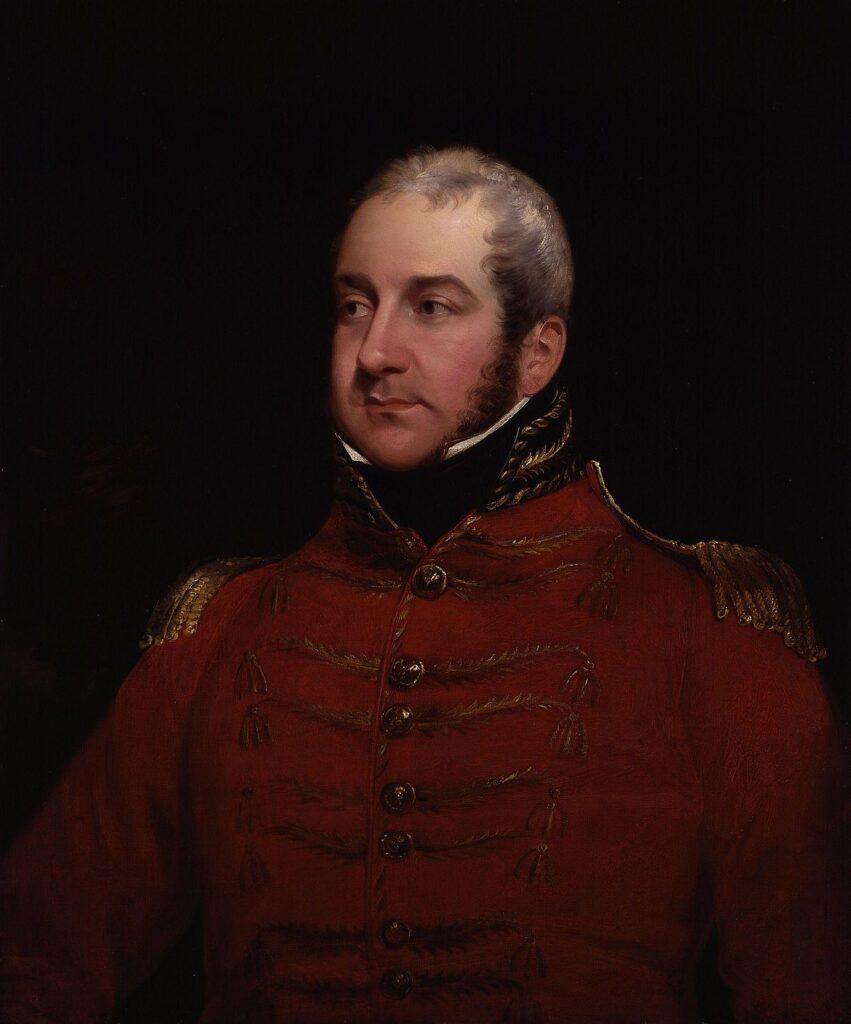Introduced rockets to Europe after centuries of neglect.
William Congreve was born May 20, 1772, in Kent, England. His father, Sir William Congreve, was Commandant of Royal Artillery and Comptroller of the Royal Laboratory of the Woolrich Arsenal, responsible for ensuring the quality of all British military gunpowder. William attended Singlewell School in Kent, and in 1788 enrolled in Trinity College, Cambridge, earning a B.A. in 1793, and an M.A. in 1795. Afterward he studied law, then edited a political newspaper. Eventually, Congreve would devote his life’s work to the development of the war rocket, spurred on by a desire to help defend England from invasion by Napolean.
Throughout most of the eighteenth century, the French led the world in the production of rockets. Most of these were used as fireworks, but some were incendiary and explosive war rockets. At the time, military rockets were not regarded as a necessity due to advancements in conventional artillery. But, as the nineteenth century dawned, rockets would again be highlighted in battle.
In 1788, Hyder Ali, ruler of the kingdom of Mysore in India formed a rocketeer contingent of 1,200 men. His son, Tippoo Sultaun, used rockets quite effectively against the British at the Battle of Seringapatam in 1792. Tippoo’s army included a rocket brigade of 5000 men who launched a huge barrage of rockets. Although the Indian rockets were primitive by modern standards, their sheer numbers, noise, and brilliance were effective at disorienting the heavily outnumbered British soldiers.
By 1804, William Congreve had begun studying and refining captured Indian rockets at the Royal Laboratory, Woolwich Arsenal in Kent. His first product was an elongated, larger version of an Indian rocket that he designed to be launched from ships. In 1805, Congreve gave a successful demonstration of his rockets to the British Prime Minister and other government officials, who agreed to fund further work. On October 8, 1806, Congreve rockets were used for the first time in combat. Fired in salvos from specially-built boats, they were very effective in burning down much of the town of Boulogne. More than 2,000 Congreve rockets were fired without the French returning a single shot.
In 1807, the Danish capital of Copenhagen was severely damaged by fires ignited by the more than 25,000 Congreve rockets the British launched against it (Denmark was an ally of Napolean). Congreve rockets were also used in the naval Battle of the Basque Roads in 1808 and in the Walcheren Island expedition in 1809. Congreve was present in all these battles. Impressed with the results of his rockets, in 1809, Parliament ordered Congreve to form two rocket companies. In 1810 or 1811 he became equerry to the British prince regent, and in 1811 he was elected a fellow of the Royal Society. That same year Congreve received the military rank when he was made a lieutenant-colonel in the Hanoverian artillery. In October 1813, he personally commanded a rocket battery at the Battle of Leipzig, one of Napolean’s worst defeats. Congreve rockets also played a role in Napolean’s final loss, at Waterloo, in June of 1815.
A variety of Congreve rockets were used by the British military from 1805 on; these weighed 18, 24, 32, 42, 100 or 300 pounds. The rocket most widely used in battle weighed 32 pounds, with a gunpowder charge housed in a casing 3 feet, 6 inches long by 4 inches wide. With a range of up to 9000 feet, Congreve rockets were an important weapon in Britain’s arsenal.
William Congreve continued to improve on his rockets’ range and accuracy, and many European countries soon formed rocket corps, usually attached to artillery units. Congreve rockets became obsolete due to improved artillery and ordnance by the mid-nineteenth century, but they continued to be used as flares and in ship rescue.
The most famous legacy of the Congreve rockets came during the War of 1812 when they created the “Rockets’ Red Glare.” For 25 hours barrages of Congreve rockets were fired from the British ship Erebus against the Americans defenders of Fort McHenry in Baltimore, Maryland on September 13 and 14, 1814. Each of the rockets fired against Fort McHenry weighed about 32 pounds, and carried an incendiary charge.
Despite the heavy bombardment, just four of Fort McHenry’s defenders were killed, the fort suffered only minimal damage, and the British were unable to capture Baltimore. The attack was witnessed by Francis Scott Key, a young American lawyer who mentioned the “rockets’ red glare” in his poem, “The Star-Spangled Banner” that soon became a patriotic song.
In other battles in the War of 1812, Congreve rockets proved more effective, especially against American soldiers unprotected by fortifications. These field artillery rockets weighed up to twelve pounds each and carried case-shot carbine balls that flew out like shrapnel when a charge of gunpowder exploded. Congreve rockets routed an American rifle battalion at the Battle of Bladensburg, Maryland on August 24, 1814. As British officer George R. Gleig said of the American soldiers, “Never did men with arms in their hands make better use of their legs.”
Upon the death of his father in 1814 (whose baronetcy he inherited), Colonel Congreve became comptroller of the Royal Laboratory of Woolwich Arsenal. From 1818 until his death in Toulouse, France on May 16, 1828, William Congreve was also a Member of Parliament for Plymouth, Devon.

